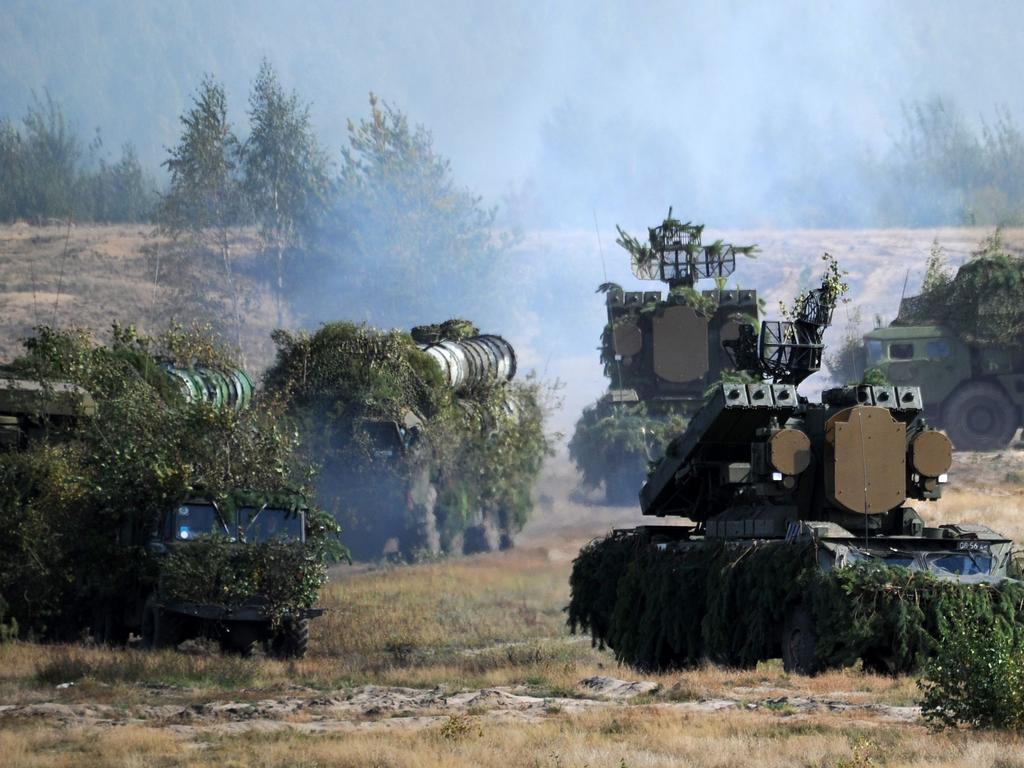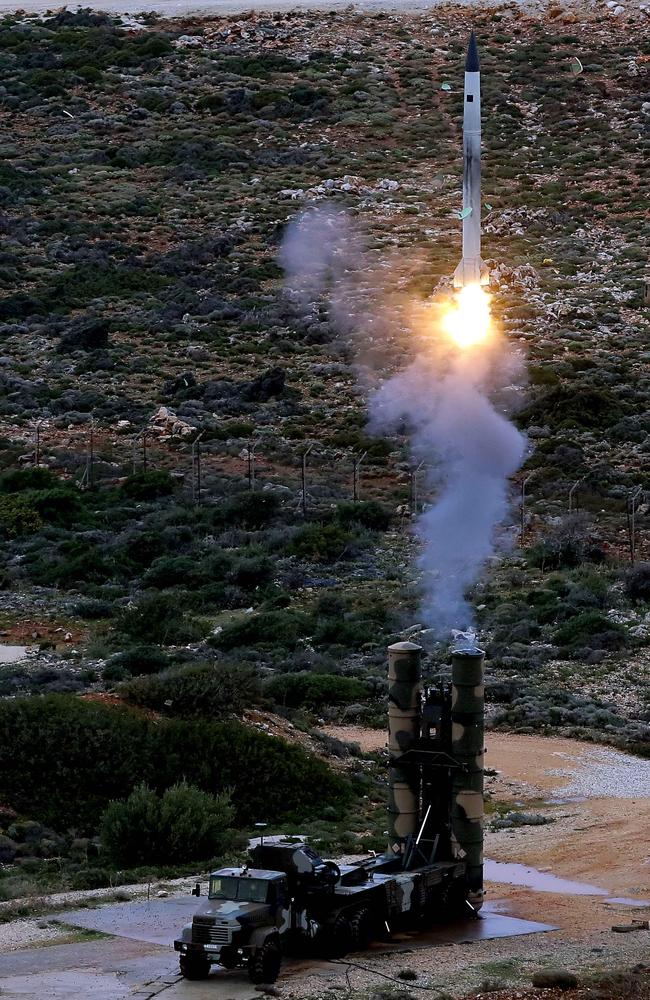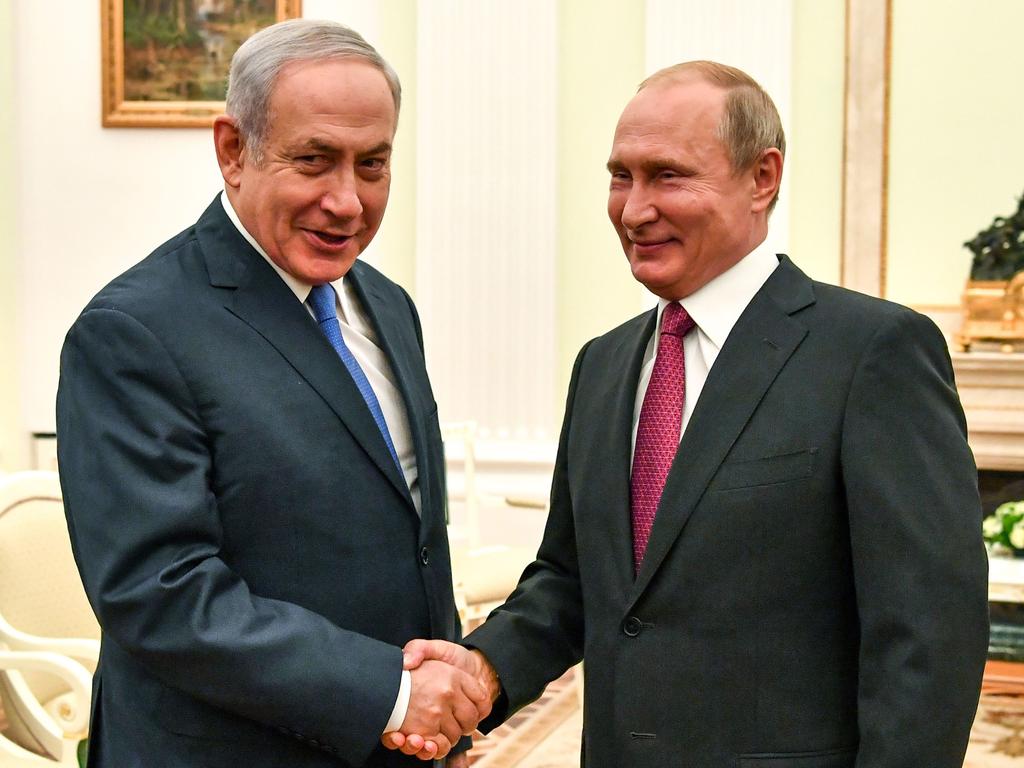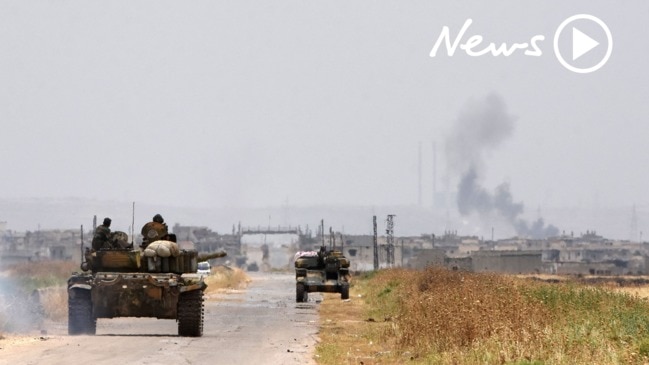Russia moves S-300 missiles, jamming gear to Syria amid threats to ‘shoot down’ attackers
THE Kremlin says it will install an advanced new missile system in Syria to protect its military, after it blamed Israel for the downing of one of its planes last week.
MOSCOW has rejected outright Israel’s argument that its combat jets were nowhere near the reconnaissance plane shot down by Syrian air defences last week. Now it says it will deliver — and deploy troops for — an advanced new missile system to the war-torn region, and shoot down any attackers.
Defence Minister Sergei Shoigu said President Vladimir Putin ordered new security measures to protect its military in Syria, including supplying the Syrian army with an S-300 air defence system and jamming radars following the downing of a Russian plane last week.
A Syrian Soviet-era S-200 missile shot down the Russian surveillance plane by mistake, killing 15 in an accident Moscow blames on Israel’s fighter jet having used the surveillance plane to ‘hide’ behind.
But the new moves make the likelihood of similar events much greater — with the all-encompassing threat by Russia to jam the navigation and communications systems of all foreign combat aircraft flying over Syria, and to shoot on anything it perceives as a threat.
“This has pushed us to adopt adequate response measures directed at boosting the security of Russian troops” in Syria, Shoigu said in a televised statement. “(Russia will) transfer the modern S-300 air defence system to the Syrian armed forces within two weeks.”

SCENE SET FOR DISASTER
“In regions near Syria over the Mediterranean Sea, there will be radio-electronic suppression of satellite navigation, on-board radar systems and communication systems of military aviation attacking objects on Syrian territory,” Defence minister Shoigu said.
This applies to all combatants, including Britain, France, Turkey — and the United States.
Minister Shoigu said the Syrian military had already been trained to use the S-300 system, which was set to be sent over in 2013 but held up ‘at the request of Israel’.
Now, Russian-manned S-300 missile launchers will be placed alongside those being operated by Syria.
A major part of last week’s ‘friendly fire’ incident is that Syria does not possess secret Russian identification friend-or-foe (IFF) codes.
“The S-300 systems Russia plans to supply to Syria will feature a compromise solution,” said Nikolai Sokov, a Senior Fellow at the Middlebury Institute of International Studies. “They will be fully equipped to distinguish Russian aircraft … but there will be Russian personnel present at controls.”
Israel’s insistence that it will not be deterred striking targets it deems to be a risk to its national security therefore makes the chances of Russian troops being killed dangerously high.
In the past two years Israel has carried out more than 200 air strikes in Syria against Assad’s government, its Lebanese ally Hezbollah and Iranian targets.
Syria, in response, often fires its anti-aircraft guns and missiles indiscriminately into the skies — largely blinded by Israeli countermeasures. Only one Israeli F-16 fighter jet has been hit and forced to crash in a February clash.
In retaliation, Israel launched an intensive strike across Syria — in which it claims it destroyed half its air defence network.
Any future attack will run the risk of killing Russian troops.

“Obviously, this seriously constrains not just Israeli, but also US operations in case of possible bombing of Syria,” Sokov told Business Insider.
“Not only Syrian air defence will become more capable, but it will be necessary to keep in mind the presence of Russian operators at the Syrian air defence systems.”
The US has not missed that point.
“We think introducing the S-300s to the Syrian government would be a significant escalation by the Russians and something that we hope, if these press reports are accurate, they would reconsider,” US National Security Advisor, John Bolton, warned yesterday.
“We have American forces in the area we’re concerned about,” Bolton said.

PUTIN BLAMES ISRAEL
An Israeli official said the Russian plane was shot down because Syrian batteries had “fired recklessly, irresponsibly and unprofessionally, long after our planes were no longer there”.
But last week’s incident has soured relations between Israeli Prime Minister Benjamin Netanyahu and Russia’s President Putin.
Putin said that he disagreed with the Israeli version of events and pinned the blame on the Israeli military.
The Kremlin chief had taken a more conciliatory tone when he described the downing as the result of “tragic accidental circumstances”.
But Moscow now says Israeli F-16 planes which struck Latakia in western Syria used a “premeditated” tactic to fly behind the landing Russian Il-20 surveillance plane as “cover,” which resulted in the larger Il-20 being hit by a Syrian missile.

“According to information of our military experts, the reason (behind the downing) were premeditated actions by Israeli pilots which certainly cannot but harm our relations,” Kremlin spokesman Dmitry Peskov said.
The Russian military has said that Israel’s air force informed its command in Syria via the established conflict de-escalation hotline, but only one minute before the air strikes — and gave the wrong target location.
Because of this, Moscow claims that the Russian air force could not keep its plane safe.
“The information provided by the Israeli military … runs counter to conclusions of the Russian defence ministry,” the Kremlin said of Monday’s call between Putin and Netanyahu.
“The Russian side proceeds from the fact that the actions by the Israeli air force were the main reason for the tragedy,” the Kremlin added.
Kremlin spokesman Dmitry Peskov warned earlier the accident would affect relations between the two countries.
“According to information of our military experts, the reason (behind the downing) were premeditated actions by Israeli pilots which certainly cannot but harm our relations,” Peskov told journalists.

ADDITIONAL THREAT
At the Pentagon, US Defense Secretary Jim Mattis slammed Moscow’s move.
“Any additional weapons going in to support Assad right now keeps him in a position of threat to the region — and the threat is refugee flows coming out of the region, it’s murder of his own people,” Mattis told reporters.
“Anything like this puts (Assad) in a position, basically, to be more of an obstruction to resolving and ending this fight.”
Military analyst Vladimir Sotnikov said that despite putting in place the new security measures Moscow would want to avoid a direct military clash with Israel, a key US ally.
“I don’t think that the decision to send an S-300 to Syria would significantly worsen ties with Israel,” he said, ruling out an escalation of the Syrian conflict.
Peskov reiterated Moscow’s stance that the new measures were only to boost the safety of its troops in Syria.
“Russia in this case is acting in its interests only, these actions are not directed against third countries, but towards defending our own military,” he said.
A spokesperson for the Israeli army declined to comment on Moscow’s S-300 delivery.




